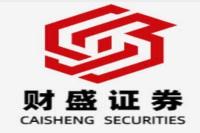Unlocking China's Economic Engine: A Deep Dive into Supply-Side and Demand-Side Synergies
Meta Description: Explore the crucial interplay of supply and demand in revitalizing China's economy. Learn about supply-side structural reforms, demand-side expansion strategies, and the path towards a robust, self-sufficient economic cycle. #ChinaEconomy #SupplySide #DemandSide #EconomicGrowth #Macroeconomics
Imagine a colossal engine, the heart of China's economic powerhouse. For years, it's rumbled along, but lately, the rhythm has faltered. A sluggish heartbeat, punctuated by the coughs of global uncertainty and the whispers of insufficient domestic demand. But what if I told you the solution lies not in simply revving the engine harder, but in a meticulously orchestrated symphony of supply and demand, a finely tuned dance between the two fundamental pillars of any thriving market? That's precisely the focus of the recent Central Economic Work Conference in China, and it's a strategy brimming with potential to propel China’s economy to new heights. This isn't just about numbers on a spreadsheet; it's about creating a more resilient, dynamic, and ultimately, prosperous future for the Chinese people – a future where every citizen feels the positive impact. This isn't theoretical; it's a practical roadmap based on years of economic analysis and grounded in the lived experiences of millions. Get ready to delve into the intricate details, understand the challenges, and witness the potential for transformative change. We'll uncover the secrets behind the strategy, examine the potential pitfalls, and explore the brighter future it promises. This isn’t just another economic report; it's a story of innovation, resilience, and the unwavering pursuit of progress. Let's unlock the engine together!
Supply-Side Structural Reforms: The Foundation of a Thriving Economy
The Central Economic Work Conference's strategy hinges on a dual-pronged approach: bolstering the supply-side while simultaneously expanding the demand-side. Let's start with the former. Supply-side structural reforms aren't merely about producing more goods; it's about producing better goods, more efficiently, and in a way that resonates with the evolving needs and desires of consumers. Think of it as a tailor making a bespoke suit – perfectly fitted to the client's specifications. This means focusing on:
-
Enhanced Adaptability and Balance: The core aim is to make the supply of goods and services precisely match the demand. This requires a constant feedback loop, a dynamic process of adjustment based on real-time market signals. It’s about anticipating needs, rather than simply reacting to them. For example, if data suggests a surge in demand for electric vehicles, manufacturers must adapt swiftly, investing in the necessary technology and infrastructure.
-
High-Quality Supply Creates New Demand: This is where things get really interesting. The strategy isn't just about meeting existing demand; it's about creating new demand through innovation. Imagine introducing a revolutionary new product – a smartphone with unprecedented capabilities, a high-speed rail network connecting remote regions, or a groundbreaking medical technology. Such innovations not only satisfy existing needs but also generate entirely new ones, thereby stimulating economic growth.
-
Optimizing Investment and Innovation: Efficient resource allocation is paramount. This involves strategic investment in research and development, fostering a vibrant entrepreneurial ecosystem, and redirecting resources away from less productive sectors. Think of it as pruning a tree, removing dead branches to allow healthy growth to flourish.
-
Structural Upgrades: This includes streamlining industrial processes, modernizing infrastructure, and fostering technological advancement across various sectors. It's about moving away from low-value-added industries towards higher-value-added ones, enhancing competitiveness on the global stage. This is a long-term strategic shift, not a quick fix.
This isn't a top-down, government-driven approach. It's about empowering businesses to innovate, to take risks, and to drive growth – all within a supportive regulatory environment that incentivizes investment and efficiency.
Expanding Domestic Demand: The Engine of Growth
While a robust supply-side is essential, it’s meaningless without sufficient demand. The conference rightly emphasizes expanding domestic demand as a long-term strategic priority. This isn't just about increasing consumption; it's about creating a virtuous cycle where increased income leads to increased spending, driving further economic growth. Key strategies include:
-
Focusing on the needs of the people: This is about understanding and catering to the evolving aspirations of the Chinese population. It’s about delivering higher-quality products and services, enhancing the overall quality of life, and creating a more equitable distribution of wealth. This requires attention to factors such as affordable housing, healthcare, and education.
-
Addressing Bottlenecks in Production, Distribution, and Consumption: The strategy involves removing obstacles that hinder the flow of goods and services. This includes improving infrastructure, streamlining logistics, promoting e-commerce, and ensuring fair competition. Think of it as unclogging arteries in the economic bloodstream.
-
Strengthening the Role of Consumption: The aim is to make domestic consumption the primary driver of economic growth, reducing reliance on exports. This involves boosting incomes, fostering consumer confidence, and creating a more robust and resilient consumer market. This means more than just spending; it's about creating sustainable, long-term consumption patterns.
The Synergy of Supply and Demand: A Holistic Approach
The beauty of this strategy lies in its holistic nature. It's not about prioritizing supply or demand; it's about creating a harmonious balance between the two. A strong supply-side provides the goods and services that consumers demand, while a robust demand-side ensures that those goods and services are purchased, creating a positive feedback loop that fuels economic growth. This synergistic approach is crucial for achieving sustainable and inclusive development. It's a shift from a purely export-oriented model towards a more balanced and self-sufficient economy.
Challenges and Opportunities: Navigating the Path Ahead
While the strategy is ambitious and promising, it's not without its challenges. Global economic uncertainty, geopolitical tensions, and technological disruptions all pose significant hurdles. However, the very nature of this dual-pronged approach provides resilience against some of these uncertainties. A focus on domestic demand reduces dependence on volatile external markets, while supply-side reforms enhance competitiveness and adaptability. The successful implementation of this strategy will depend on effective policy coordination, efficient resource allocation, and a supportive regulatory environment.
Frequently Asked Questions (FAQs)
Q1: How does this strategy differ from previous economic policies in China?
A1: Previous policies often focused more heavily on export-led growth. This strategy emphasizes a more balanced approach, focusing on both supply-side reforms and expanding domestic demand, creating a more self-reliant and sustainable economy.
Q2: What are the biggest risks associated with this strategy?
A2: The biggest risks include global economic downturns, persistent inflation, and potential challenges in implementing reforms efficiently across different sectors. Effective policy coordination and careful monitoring are crucial to mitigate these risks.
Q3: How will this strategy impact consumers in China?
A3: The aim is to improve the quality of life for consumers by providing better goods and services at more affordable prices, creating more jobs, and generally improving the overall economic environment.
Q4: What role does innovation play in this strategy?
A4: Innovation is central to both the supply-side and demand-side components. Supply-side improvements rely on technological advancements and efficient production methods, while demand-side expansion is fueled by the creation of new products and services that cater to evolving consumer needs.
Q5: How will the government ensure the success of this strategy?
A5: The government will play a vital role in creating a supportive regulatory environment, investing in infrastructure, promoting innovation, and ensuring fair competition. Effective policy coordination and strong regulatory oversight are crucial for success.
Q6: What is the timeline for implementing this strategy?
A6: This is a long-term strategy, not a short-term fix. It requires sustained effort and commitment over many years to achieve its full potential. Progress will be monitored and adjusted as needed.
Conclusion: A Future of Sustainable Prosperity
China's strategy for economic revitalization is a bold and ambitious undertaking, focused on creating a more resilient, self-sufficient, and prosperous economy. By meticulously balancing supply-side reforms with a concerted effort to expand domestic demand, China aims to unlock its economic potential and create a future where sustainable growth benefits all its citizens. While challenges remain, the inherent strength of this dual-pronged approach, coupled with effective implementation, positions China for a future of sustainable prosperity and global influence. This isn't just about economic numbers; it's about building a better future for generations to come. The journey may be long, but the destination promises a brighter horizon.



